Kairos Pavilion by João Quintela and Tim Simon
Lisbon Architecture Triennale: an austere concrete pavilion in Lisbon with a staggered corridor and a hidden courtyard will host events and exhibitions during the Lisbon Architecture Triennale, which kicks off next month (+ slideshow).
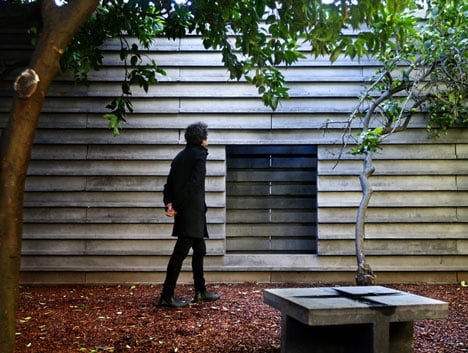
Designed by Portuguese architect João Quintela and German architect Tim Simon, the Kairos Pavilion is a permanent structure built from prefabricated concrete blocks that slot together without any adhesives or fixings.
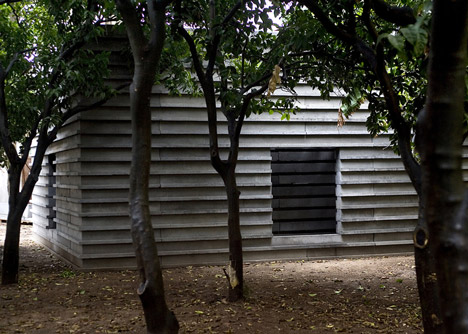
A single large window punctures every elevation of the rectilinear structure, each leading into a corridor that lines the perimeter. This walkway steps both up and down, transforming from a sunken shelter into a raised viewpoint.
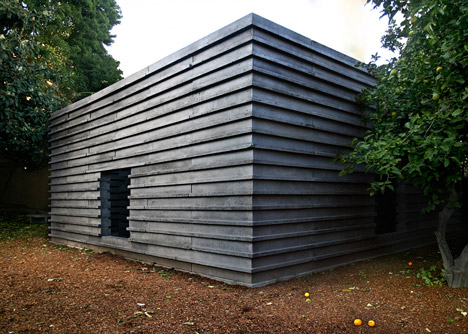
The highest points of the walkway offer views down into the centre of the pavilion, where a square courtyard functions as a stage for exhibitions, speakers or musical performances.
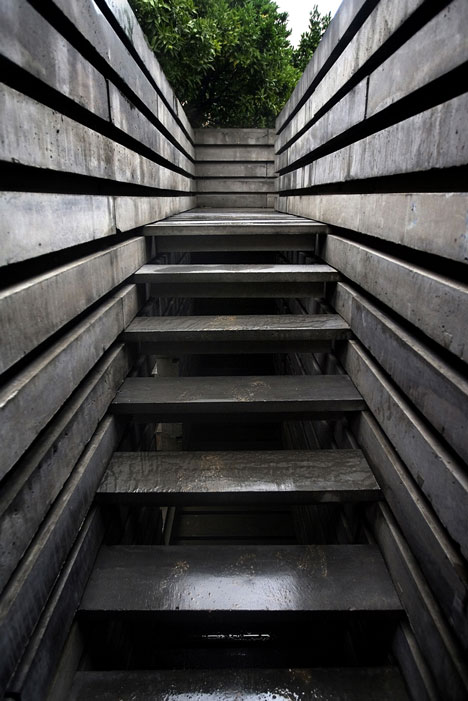
The floor of this space is also set down by 20 centimetres to accommodate a shallow pool of water, forming a mirror that reflects an image of the sky above.
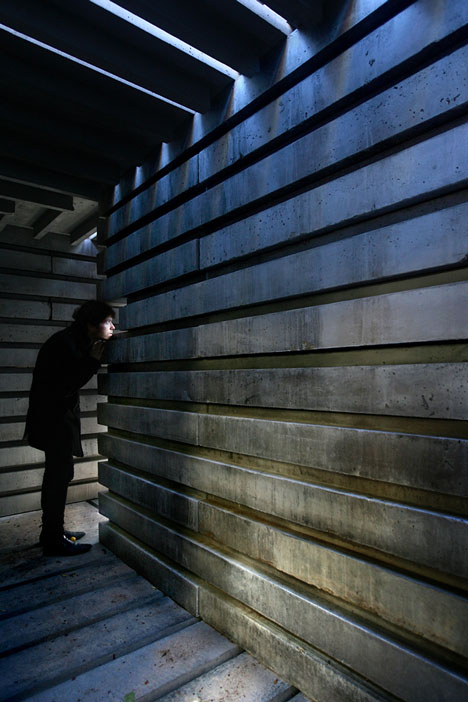
The architects describe the project as an experiment with scale, light and time. "It's an investigation about proportions and the relationship between the small scale of the isolated module and the large scale of the whole building itself in relation with the context," they said.
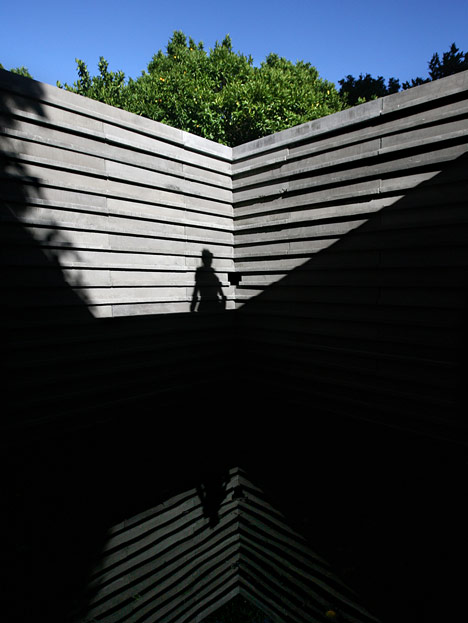
Named Kairos, the building first opened in 2012 and has been used to host projects and talks by architects such as Alberto Campo Baeza, Aires Mateus and Pezo von Ellrichshausen. It will also feature in the Lisbon Architecture Triennale 2013, which runs from 12 September to 15 December - more details in our earlier story.
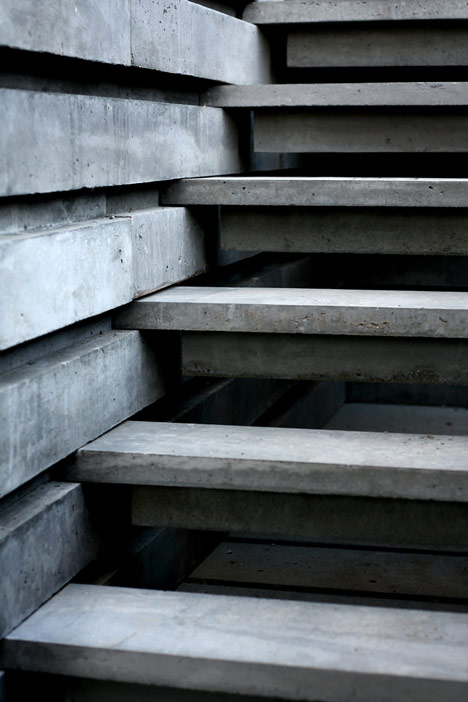
Other concrete pavilions featured on Dezeen include a ribbed structure at the University of Porto and a playground pavilion in Dallas, Texas.
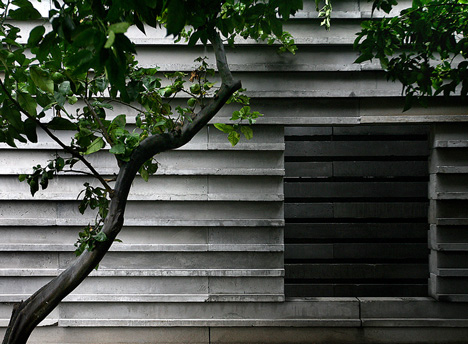
See more pavilions on Dezeen »
See more concrete architecture and design »
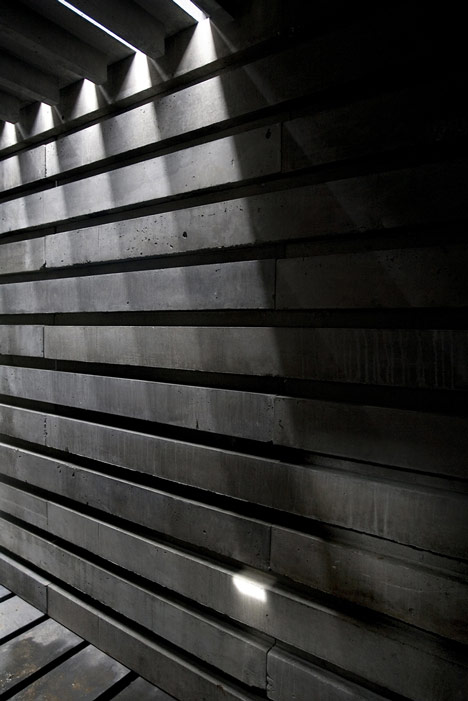
Photography is by Diana Quintela.
Read on for more information from the design team:
KAIROS Pavilion, Lisbon, Portugal
Synopsis
KAIROS is a project created in 2012 by the architects João Quintela and Tim Simon in partnership with the company's prefab concrete Gracifer and with the Lisbon Architecture Triennale's support as an answer to an inhibitor and unsustainable social and economic context, with the aim of encouraging, generating and presenting exhibitions in which Space appears as the central theme.
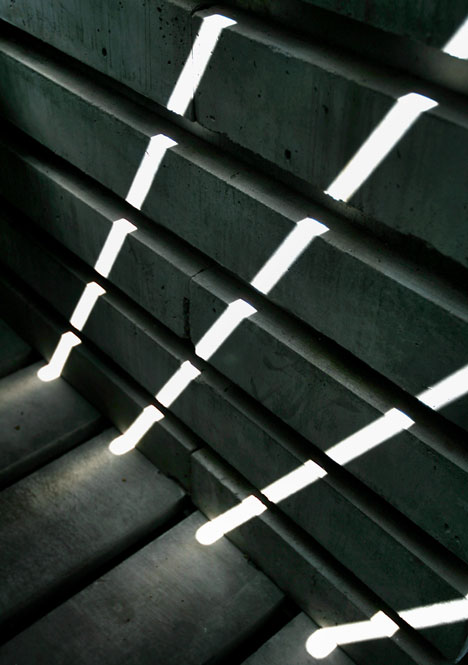
It's a pavilion - non-profit project - that intends to receive site-specific installations proposed by architects and artists. These projects should be created as an original work developed for this space exploiting its characteristics and dialoguing with the ambiences through their own and personal research.
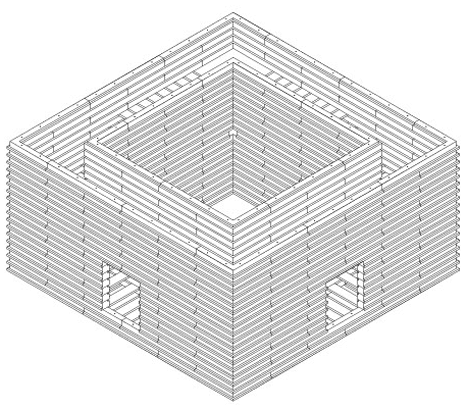
Following this concept, and moving away from the institutional circuit of museums and galleries, the space is intended to be public, free and open to all the participants and proposals that want to integrate the exhibition's calendar and by this generate the meeting and interaction between different and multidisciplinary projects.
The invitation to participate and submit proposals in KAIROS Pavilion is open to architecture, fine arts, performance, theatre, music and other artistic languages in which the participants feel that fits inside this concept contributing to approach creators and public.
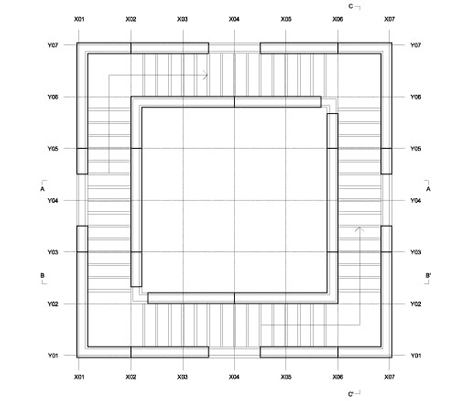
Project
To the linear and chronological time 'CHRONOS' opposes 'KAIROS', an undefined and symbolic time which cannot be measured except by its quality.
The building wants to put two apparently irreconcilable times in dialogue. Since the very ancient periods buildings aspire to the idea of the 'eternal' through a spatiality and materiality able to resist time. The great temples and cathedrals, completely made out of natural stone, continue to coexist with the contemporaneity. Concrete constructions represent undoubtedly the legacy of modernity and they recover as well this symbolic idea of eternity.
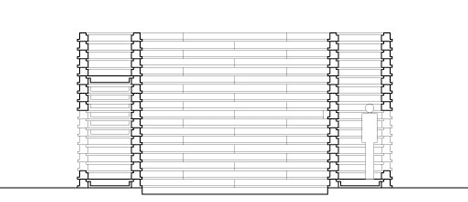
This confront between the temporary and the eternal is something worth researching through a general view to the possibilities that our time can offer us. This prefab solution is capable to deal simultaneously with these two aspects as it allows us working with a durable and resistant material dialoguing with continuous Time, through a modular construction and an easy assembly or disassembly.
KAIROS, created by João Quintela and Tim Simon, appears as a result of a spatial research referenced in history through the use of Matter, Light and Time. The Matter of the Concrete, the Light of the Sun and the Time built from both. It's an investigation about proportions and the relationship between the small scale of the isolated module and the large scale of the whole building itself in relation with the context.
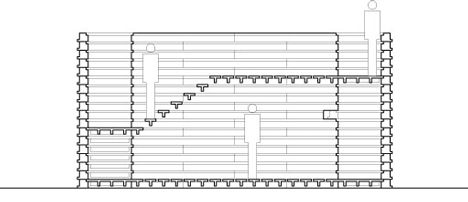
The space is built by a very easy and primitive constructive system of overlapping and joining pieces, taking advantage of their own weight without using any glue or screws. It's a square plan building with an inside square patio. Thus, there exists a perimeter all around that consists in a path developed both on the lower and upper level, generating two similar spaces with completely antagonistic ambiences. One is covered and black while the other is exterior and bright.
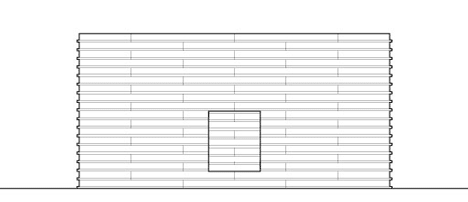
The inner patio is defined by the mirror created through the water inside which reflects the sky and duplicates the space. This becomes the central element, inaccessible and contemplative, able to freeze time and build an intimate moment, a dialogue with the past. Becomes the most significant space and acquires symbolism due to his impossible conquer.